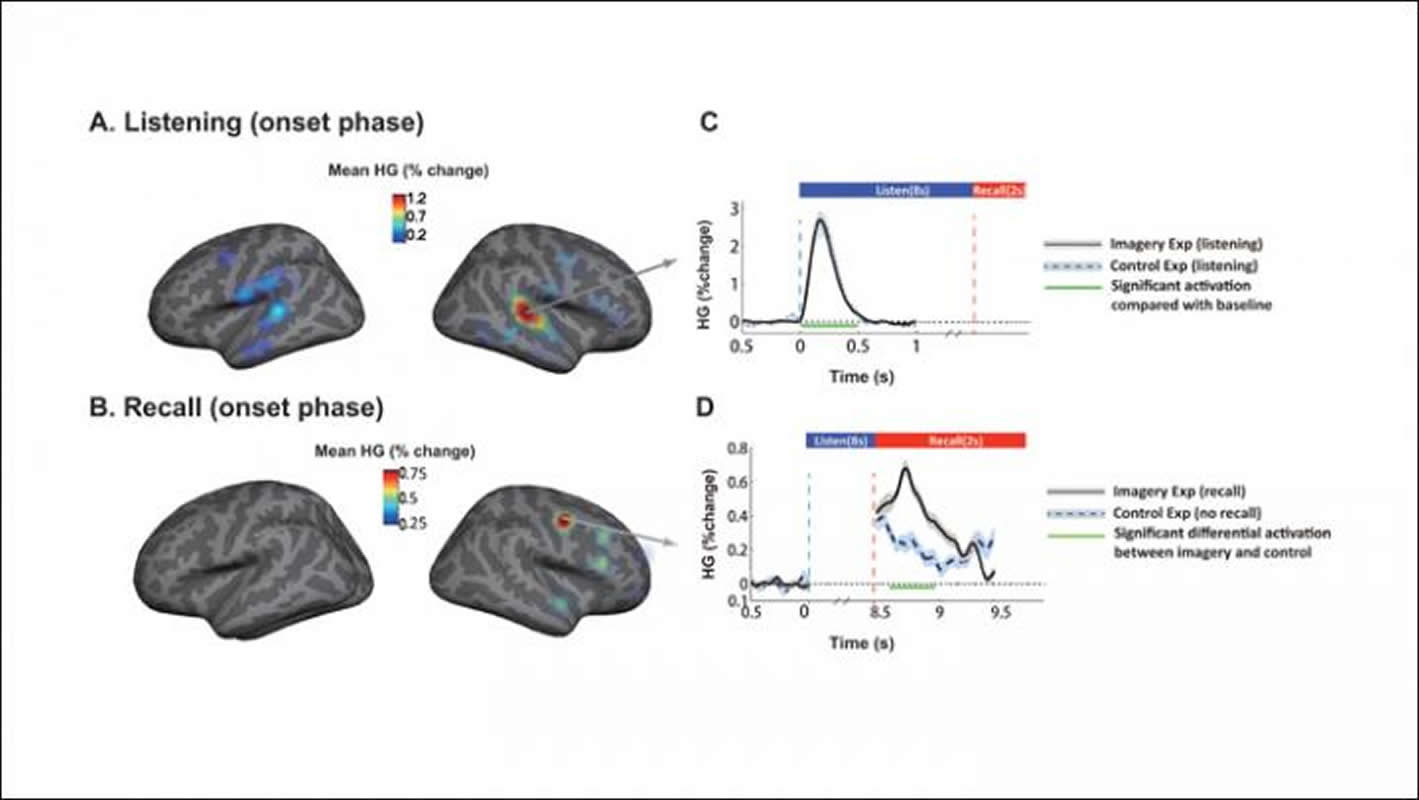Summary: When people listen to music, the neural tracking of the frontal lobe lags behind the temporal lobe, but during music recall, the frontal lobe precedes that of the temporal lobe. The findings demonstrate bottom-up and top-down processes in the cerebral cortex during music listening and recall. The study provides important insights into how the human brain processes music.
Source: SfN
Scientists have observed how the human brain represents a familiar piece of music, according to research published in Journal of Neuroscience. Their results suggest that listening to and remembering music involve different cognitive processes.
Previous research has pinpointed areas of the brain — primarily on the right side — that are activated by music. However, less is known about how activity in these regions unfolds over time.
In a new study of male and female epilepsy patients, Ding et al. recorded electrical activity directly from the surface of the brain as participants listened to well-known pieces of music, including Beethoven’s “Für Elise” and Richard Wagner’s “Wedding March.” A network of overlapping brain regions was associated with the act of listening to the music and continuing the melody in one’s head.

The researchers found that musical information traveled in opposite directions during these processes, flowing from sensory to frontal regions during listening and from frontal to sensory regions during recall.
Source:
SfN
Media Contacts:
David Barnstone – SfN
Image Source:
The image is credited to Ding et al., JNeurosci (2019).
Original Research: Closed access
“Neural Correlates of Music Listening and Recall in the Human Brain”. Yue Ding, Yang Zhang, Wenjing Zhou, Zhipei Ling, Juan Huang, Bo Hong and Xiaoqin Wang.
Journal of Neuroscience doi:10.1523/JNEUROSCI.1468-18.2019
Abstract
Neural Correlates of Music Listening and Recall in the Human Brain
Previous neuroimaging studies have identified various brain regions that are activated by music listening or recall. However, little is known about how these brain regions represent the time course and temporal features of music during listening and recall. Here we analyzed neural activity in different brain regions associated with music listening and recall using electrocorticography (ECoG) recordings obtained from ten epilepsy patients of both genders implanted with subdural electrodes. ECoG signals were recorded while subjects were listening to familiar instrumental music or recalling the same music pieces by imagery. During the onset phase (0-500ms), music listening initiated cortical activity in high-gamma band in the temporal lobe and supramarginal gyrus, followed by the precentral gyrus and the inferior frontal gyrus. In contrast, during music recall the high-gamma band activity first appeared in the inferior frontal gyrus and precentral gyrus, and then spread to the temporal lobe, showing a reversed temporal sequential order. During the sustained phase (after 500ms), delta band and high-gamma band responses in the supramarginal gyrus, temporal and frontal lobes dynamically tracked the intensity envelope of the music during listening or recall with distinct temporal delays. During music listening, the neural tracking by the frontal lobe lagged behind that of the temporal lobe, whereas during music recall, the neural tracking by the frontal lobe preceded that of the temporal lobe. These findings demonstrate bottom-up and top-down processes in the cerebral cortex during music listening and recall and provide important insights into music processing by the human brain.
SIGNIFICANCE STATEMENT
Understanding how the brain analyzes, stores and retrieves music remains one of the most challenging problems in neuroscience. By analyzing direct neural recordings obtained from the human brain, we observed dispersed and overlapping brain regions associated with music listening and recall. Music listening initiated cortical activity in high-gamma band starting from the temporal lobe and ending at the inferior frontal gyrus. A reversed temporal flow was observed in high-gamma response during music recall. Neural responses of frontal and temporal lobes dynamically tracked the intensity envelope of music that was presented or imagined during listening or recall. These findings demonstrate bottom-up and top-down processes in the cerebral cortex during music listening and recall.






